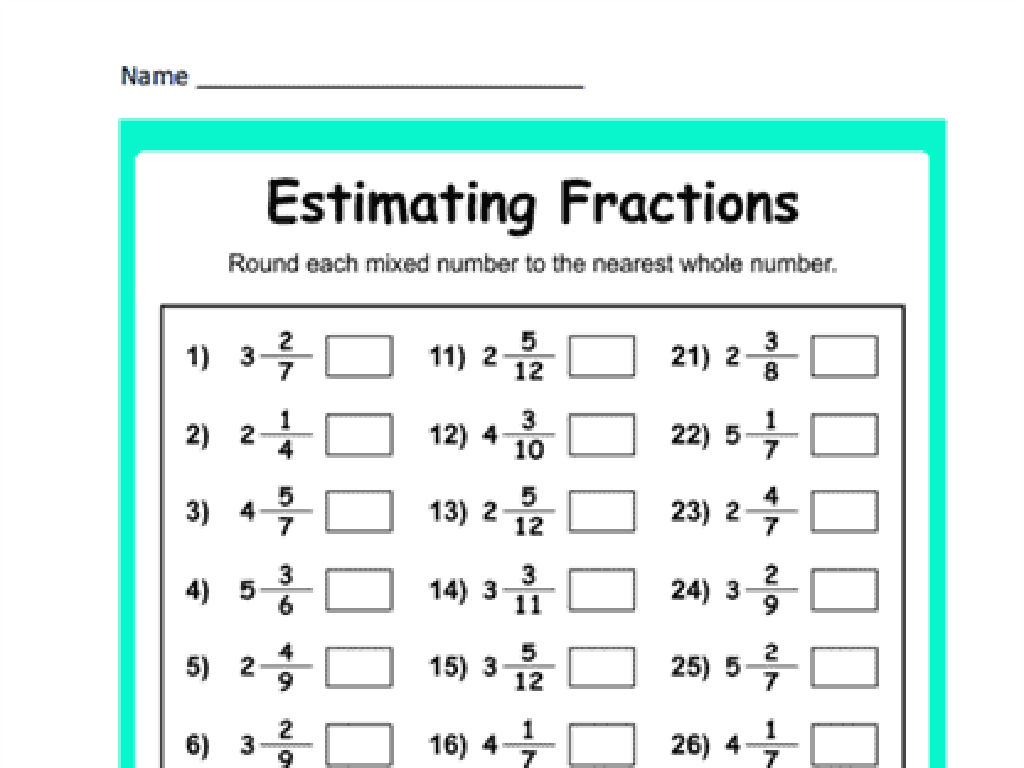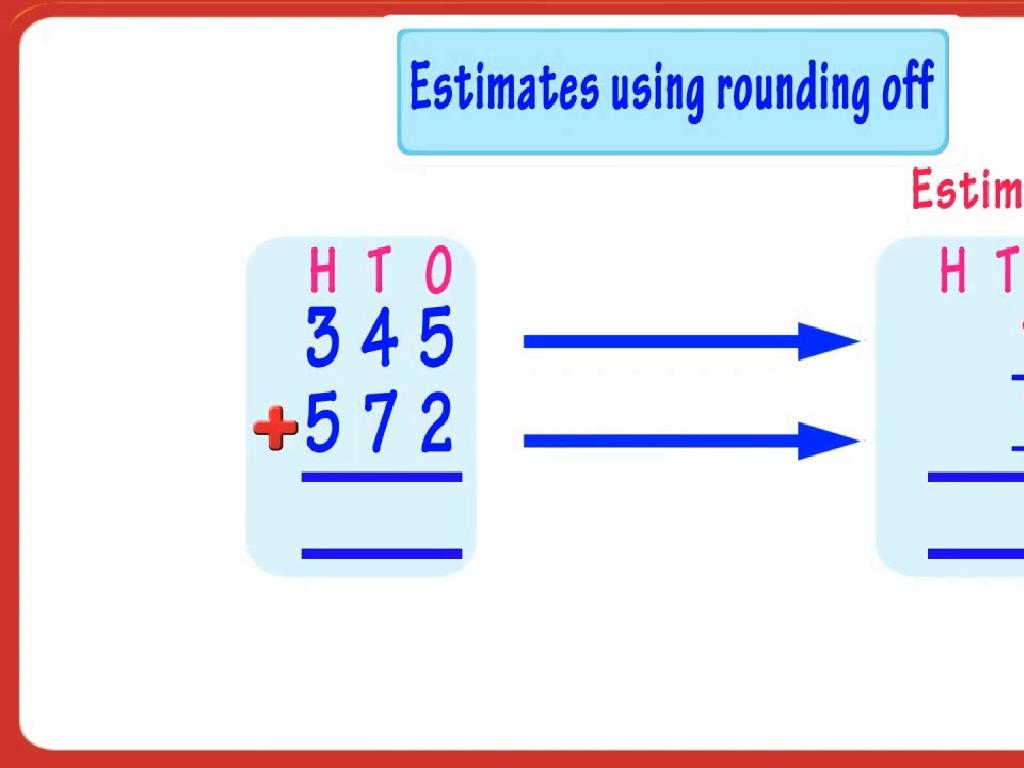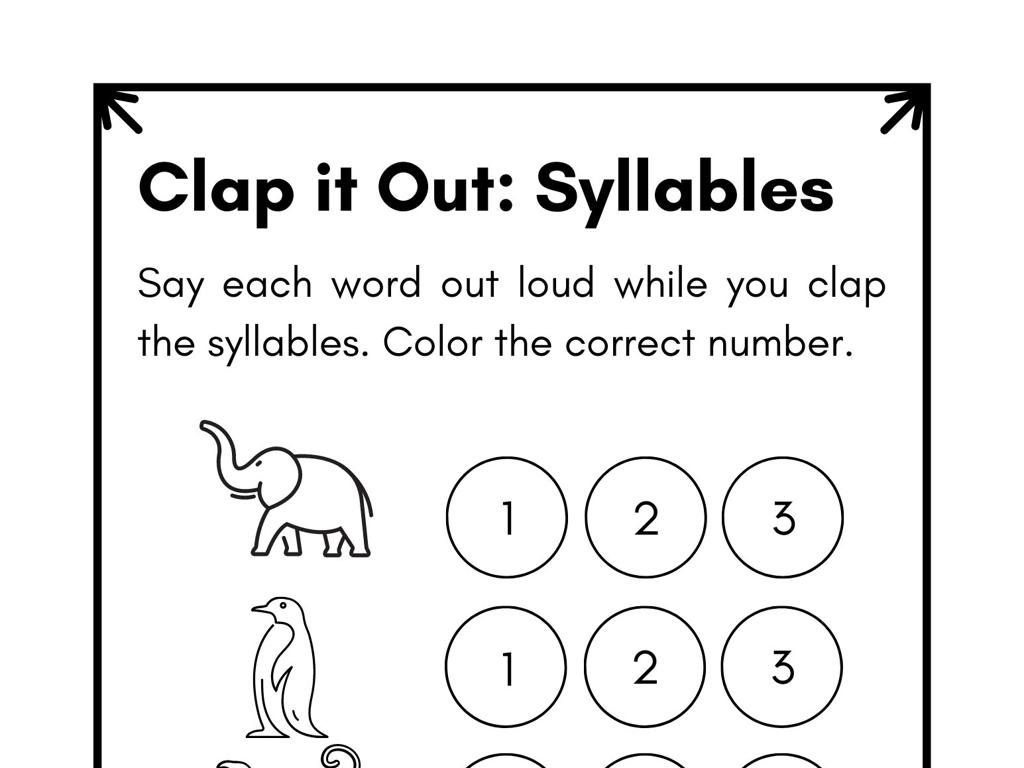Correct Errors With Frequently Confused Words
Subject: Language arts
Grade: Fifth grade
Topic: Editing And Revising
Please LOG IN to download the presentation. Access is available to registered users only.
View More Content
Navigating Frequently Confused Words
– Words that sound alike but differ in meaning
– Homophones are words that sound the same, like ‘to’, ‘two’, and ‘too’.
– Importance of choosing the right word
– Using the wrong word can change what you mean.
– Examples: ‘there’, ‘their’, ‘they’re’
– ‘There’ is a place, ‘their’ shows possession, ‘they’re’ is ‘they are’.
– Practice makes perfect
|
This slide introduces students to the concept of homophones words that sound the same but have different meanings and spellings. Emphasize the importance of context in determining the correct word to use, as misuse can lead to confusion. Use ‘there’, ‘their’, and ‘they’re’ as common examples, explaining each word’s usage with contextual sentences. Encourage students to practice by writing sentences or a short paragraph using these words correctly. Provide additional examples and engage the class in a discussion about why choosing the right word matters for clear communication.
Mastering Confusing Words: There, Their, They’re
– ‘There’ indicates a location
– Example: Look over there, where the dog is playing.
– ‘Their’ denotes ownership
– Example: Their dog loves to play in the park.
– ‘They’re’ means ‘they are’
– Example: They’re going to join us for lunch.
– Practice with examples
|
This slide is aimed at helping students distinguish between ‘there’, ‘their’, and ‘they’re’, which are often confused due to their similar pronunciation. ‘There’ is used to refer to a place or position, ‘their’ is a possessive adjective indicating that something belongs to ‘them’, and ‘they’re’ is a contraction of ‘they are’. Provide clear examples for each word to illustrate their proper usage. Encourage students to create their own sentences using these words to reinforce their understanding. During the next class, review these sentences together and discuss any mistakes to ensure comprehension.
Understanding ‘To’, ‘Too’, and ‘Two’
– ‘To’ shows direction or action
– Use ‘to’ when going somewhere: ‘I go to school.’
– ‘Too’ means ‘also’ or ‘excessive’
– ‘Too’ for ‘also’: ‘I want ice cream too.’ Or too much: ‘This bag is too heavy.’
– ‘Two’ is the number after one
– ‘Two’ is a count: ‘I have two apples.’
– Let’s see examples for each
– ‘I walk to the park.’, ‘The music is too loud.’, ‘She has two cats.’
|
This slide aims to clarify the differences between the homophones ‘to’, ‘too’, and ‘two’, which are often confused by students. ‘To’ is a preposition used for expressing direction or as part of an infinitive verb. ‘Too’ can mean ‘also’ or it can indicate an excessive amount. ‘Two’ is the numerical term for the quantity 2. Provide clear example sentences for each word to help students understand their usage in context. Encourage students to create their own sentences using these words to reinforce their learning. During the next class, review these examples and ask students to identify the correct usage in additional sentences.
Understanding ‘Your’ vs. ‘You’re’
– ‘Your’ indicates ownership
– ‘You’re’ means ‘you are’
– Example: ‘Your book is on the table.’
– Shows that the book belongs to you
– Example: ‘You’re going to love this game!’
– Used instead of ‘you are’ to show action
|
This slide focuses on the difference between ‘your’ and ‘you’re,’ which are often confused in writing. ‘Your’ is a possessive adjective, used to show that something belongs to the person you are talking to. ‘You’re’ is a contraction of ‘you are,’ used to describe something about the person you are speaking to. Provide students with examples of each to illustrate the correct usage. Encourage them to create their own sentences using both words correctly. Remind them that if they can replace the word with ‘you are’ and it still makes sense, then ‘you’re’ is the correct choice. This will help them remember the difference and use these words correctly in their writing.
Practice with Context Clues
– Read a paragraph with blanks
– Use clues to find the right words
– Look for hints in the text around the blank
– Work together to fill in blanks
– Understand words through context
– Context clues can be definitions, synonyms, antonyms, or examples
|
This slide introduces an interactive class activity focused on using context clues to determine the correct words for blanks in a paragraph. The activity is designed to help students practice identifying and understanding frequently confused words through context. Start by reading a paragraph aloud with the class, then discuss potential clues for each blank. Encourage students to think about the meaning of the surrounding text and how it relates to the missing word. As a class, decide on the most appropriate word to fill each blank. This collaborative approach reinforces the concept of context clues and helps students learn from each other. Provide guidance and positive reinforcement as they work through the exercise.
Interactive Game: Word Detective
– Become a word detective
– Find misused words in sentences
– Look for words that don t fit the meaning
– Correct the errors you discover
– Use what you ve learned about confused words to fix mistakes
– Work in pairs for teamwork
– Share ideas and help each other understand
|
This interactive game is designed to engage students in identifying and correcting commonly confused words in a fun and collaborative way. As word detectives, students will sharpen their editing skills by spotting errors in sentences. Working in pairs will foster teamwork and allow them to discuss their thought process, which reinforces learning. Provide students with sentences containing misused words, such as ‘there/their/they re’ or ‘to/too/two’. Encourage them to explain why a word is incorrect and what the correct word should be. This activity not only improves their grammar but also enhances their critical thinking and cooperative learning skills.
Writing Exercise: Mastering Confused Words
– Write sentences with tricky words
– Use ‘there’, ‘their’, ‘they’re’ correctly in sentences
– Share your sentences with peers
– Read aloud to the class and explain your choice
– Vote for the most creative use
– Which sentences were the most original and correct?
– Celebrate correct word usage
|
This slide introduces a class activity focused on frequently confused words. Students will apply their understanding by writing original sentences that correctly use words that are often mixed up, such as ‘there’, ‘their’, and ‘they’re’. After writing, they will share their sentences with the class, providing an opportunity for public speaking and peer review. The class will then vote on the sentences that showcase the most creativity and accuracy, reinforcing positive learning outcomes. This activity not only helps students practice and recognize correct usage but also fosters a fun, engaging, and collaborative learning environment. As a teacher, prepare to guide students through examples, facilitate the sharing process, and ensure a supportive atmosphere for all participants.
Class Activity: Peer Review on Confused Words
– Swap papers with a classmate
– Look for commonly confused words
– Their/there/they’re, to/too/two, etc.
– Discuss corrections together
– Explain why a word should be used in place of another
– Understand why changes are made
– Helps grasp the correct usage in different contexts
|
This activity is designed to engage students in collaborative learning. By exchanging their writings, they can help each other identify and correct mistakes involving frequently confused words. It’s important to guide them to be constructive and kind during the review process. Encourage them to explain the reasoning behind their corrections to reinforce understanding. As a teacher, facilitate the discussion by providing examples and clarifications as needed. This peer review activity not only improves their editing skills but also fosters a supportive learning environment.
Conclusion: Choosing the Right Words
– Importance of correct word choice
– Recap of confused words
– Review words like ‘there/their/they re’ and ‘to/too/two’
– Proofread to avoid mistakes
– Read your work to catch errors
– Practice makes perfect
– Keep practicing with different texts
|
As we wrap up today’s lesson, it’s crucial to emphasize the impact of selecting the appropriate words to convey clear meaning in writing. Go over the list of commonly confused words discussed in class, such as ‘your/you’re,’ ‘it’s/its,’ and ‘there/their/they re.’ Remind students that proofreading is a key step in the writing process to catch and correct these mistakes. Encourage them to read their work aloud, which can help in identifying errors they might overlook when reading silently. Lastly, stress the importance of continual practice with various texts to improve their ability to recognize and use words correctly.
Homework: Mastering Confused Words
– Write a short story for homework
– Use all the confused word pairs
– Include pairs like ‘there/their’, ‘it’s/its’, ‘you’re/your’
– Highlight the confused words
– Use a different color or underline them in your story
– Share your story in class
|
This homework assignment is designed to help students practice identifying and correctly using words that are often confused, such as homophones and homographs. By writing a short story and incorporating these word pairs, students will have to think carefully about the meaning and spelling of each word in context. Highlighting these words will help them and their classmates see how the words are used correctly. In the next class, students will have the opportunity to share their stories, which will reinforce their learning and allow for peer feedback. The teacher should provide a list of commonly confused word pairs to guide the students and ensure they understand the task.






